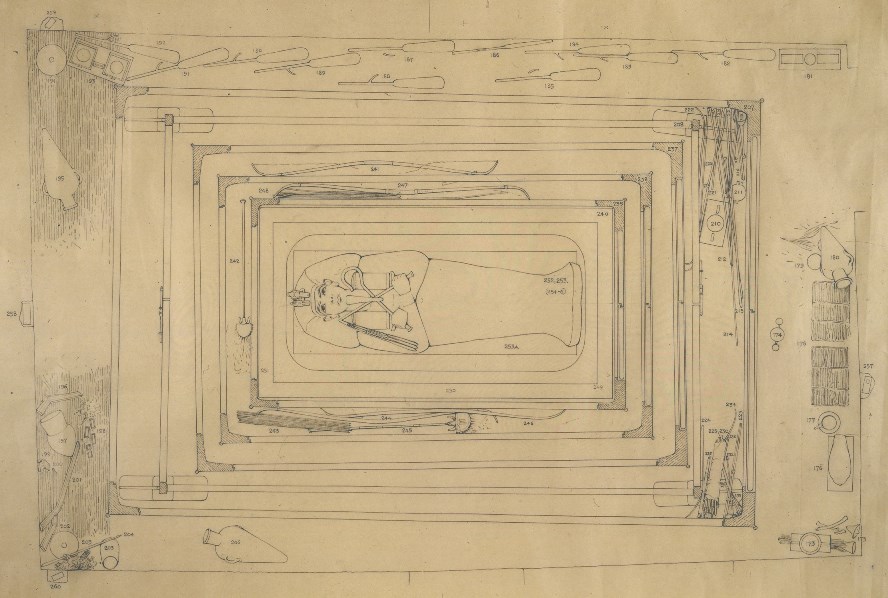
Name of the object: Plan of the Burial Chamber.
Date: 1923 to 1925.
Object information: plan of the Burial Chamber showing Tutankhamun’s burial equipment, paper and black ink, 81 by 55.5 cm.
Archive number: Carter MSS i.G.31.
Image link: http://www.griffith.ox.ac.uk/gri/burial-chamber-plan.jpg.
Background information: Plan of the Burial Chamber drawn by Howard Carter. The plan records where each object was placed in Tutankhamun’s tomb by the ancient Egyptian priests and officials. Each object is labelled with its excavation number. Tutankhamun’s Burial Chamber is very small and the burial equipment took up most of the space. The following objects were placed one inside another: four wooden burial shrines; a linen burial pall and wood support; a stone sarcophagus; and three coffins: two were made of wood and the innermost was made from solid gold. The gold coffin weighed 110 kgs, if this coffin was made today the same amount of gold would cost nearly 30 million pounds.
Activities
Object activities – describe what you can see in the plan; decide which object is which in the plan; use the information on the plan to discuss what you think it would have been like as the excavation team emptied the Burial Chamber, what would they see, hear and feel.
Extension activities - look up the measurements for Tutankhamun’s Burial Chamber and burial equipment and mark them out with chalk in the playground, create a plan of a room showing the position of the furniture, using an aerial photograph create a plan of a well-known monument such as the Tower of London, Stonehenge or the Pyramids at Giza.Related objects:
Tutankhamun: Anatomy of an Excavation
look for the object numbers 207, 208, 237, 238, 239, 240
look for the object number 253
Classroom Architect
http://classroom.4teachers.org/FloorPlanR.swf
Google maps
http://www.google.co.uk/maps/


